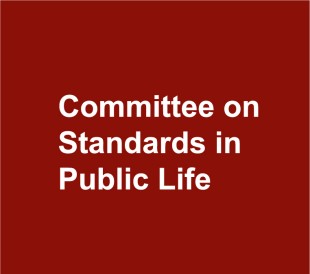Healthcare regulation takes place in a context of organisational turmoil and financial pressure. Healthcare regulators run the risk of reputational damage where it is perceived that they have failed to fulfil their role with the appropriate level of care and skill. This risk was realised this week for the Nursing and Midwifery Council and Public Health England when Pauline Cafferkey, the UK nurse who contracted Ebola while treating patients in Sierra Leone, was cleared of misconduct charges. It had been alleged that she had allowed an inaccurate recording of her temperature to be made during screening processes carried out by at Heathrow Airport on her return to the UK.
The publication, also this week, of Striking the Balance: Upholding the Seven Principles of Public Life in Regulation by the Committee on Standards in Public Life, is therefore very timely. It draws in part on my report on how healthcare regulators can enhance their compliance with the Seven Principles of Public Life: Selflessness, Integrity, Objectivity, Openness, Honesty and Leadership. My five main recommendations to enhance healthcare regulators’ compliance with these principles are:
- Acknowledge and adopt a principles-based, goals-driven regulatory approach
The provision and regulation of healthcare are distinctive in their recourse to guiding ethical principles and values. In addition to the Seven Principles, healthcare regulators must understand other ethical principles and values which guide healthcare, such as the core principles of the NHS and the NHS Constitution. Healthcare regulators themselves adopt different regulatory approaches but it is notable that all of them have principles and values at their core. Therefore they are engaged in Principles-Based Regulation (PBR).
PBR regimes should be focussed on achieving a particular regulatory goal or goals. Healthcare regulators should therefore agree on an explicit, communal overarching goal to create better regulatory cohesion. As recommended by the Berwick review in light of the Mid-Staffordshire scandal, this goal should be to ensure quality of care and patient safety.
- Adopt best practice in internal governance
Healthcare regulators should assess their internal governance structure and processes to ensure they are consistent with best practice, including for example holding board meetings in public; embedding effective audit procedures and risk reviews; and making declarations of interest public.
Healthcare regulators should communicate with each other to share good practice, increase cohesion, and embed the communal regulatory goal.
- Encourage reflexivity in the use of expert advice
Healthcare regulators often recognise that they do not have all the knowledge needed to regulate effectively and, where required, draw on expert advice to do this. The use of experts helps to maintain regulatory legitimacy – the willingness of regulatees to accept their authority- and thus should contribute to achieving the regulatory goal. However, highly specialist knowledge can also undermine accountability, integrity and objectivity through ‘regulatory capture’ in which the regulator becomes overly attuned and responsive to the interests of the regulated industry.
Healthcare regulators should therefore identify and implement conditions which encourage experts to actively reflect on the belief systems on which their views are based, and on whether and how these should be adjusted in light of the views of others. Reflexivity on the part of both regulator and advisor helps to ensure the decision-making is based on an accurate account of relevant factors and allows room for consideration of wider patient and societal concerns.
- Involve patients
Healthcare regulation is a collaborative activity which should incorporate contributions made by patients as experts in their own care needs in order to achieve the regulatory goal.
Healthcare regulators must communicate with each other on best practice in engaging with patients. Effective patient involvement requires skilled regulators to encourage reflexivity on the part of patients at the same time as enabling their voices to be heard and their views applied meaningfully.
- Adopt a consistent approach to compliance, enforcement and sanctions (CES) activities
Healthcare regulation should be responsive to the context, conduct, and culture of those being regulated and therefore emphasise trust, transparency and professionalism.
Healthcare regulators must communicate the justifications for their actions effectively. They should support healthcare providers’ compliance and use enforcement sensitively in a context in which caring and learning from error are central. They should communicate to explore best practice and develop a consistent approach to CES in the healthcare sector.
The regulatory goal can only be realised if healthcare regulation, like the activities it governs, is truly collaborative. These recommendations describe a more cohesive approach to healthcare regulation which helps regulators maintain their reputations, leads to increased compliance and enhances opportunities to achieve the regulatory goal of quality of care and patient safety. The publication of Striking the Balance provides further advice and recommendations for regulators in all sectors, which should carefully consider its contents.
Sarah Devaney is a Senior Lecturer in Healthcare Law. She is Co-Director of ManReg: the Manchester Centre for Regulation, Governance and Public Law.
